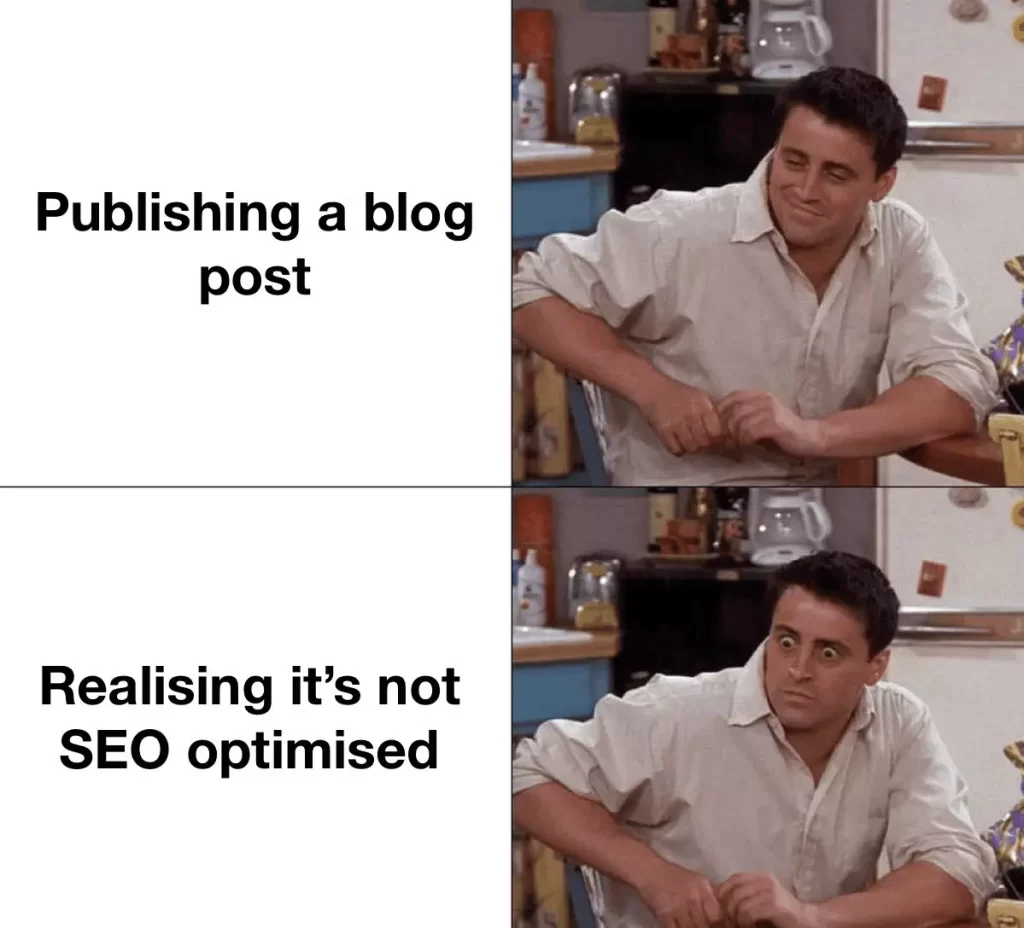If you want your brand to have a professional image and greater visibility, it is essential to design a website. But, to make sure that all the work you’ve invested works, you need to develop an SEO strategy.
In this post, we will discuss everything you need to know about SEO (Search Engine Optimization). We will tell you about the opportunities it provides and all its benefits, but if you want to learn more about how to implement this tool we recommend you to read our article Guide to optimize your SEO strategy.
What is SEO?
SEO is the process of optimizing a website to improve its ranking in search engines such as Google, Bing and Yahoo. This way your website can appear in the top results when users search for keywords relevant to your business. This helps increase organic traffic to your website, which can lead to more leads and sales.
This marketing strategy involves the use of various techniques, such as keyword research, content optimization, link building and other strategies to improve a website’s visibility in the SERP (Search Engine Results Page).
But to better understand this, let’s go back to the beginning, or mid-1990s to be exact, when search engines started to emerge on the web and became increasingly popular. At that time, website owners began to realize the importance of appearing in the top search results to drive traffic to their sites.
As search engines became more sophisticated, so did SEO techniques. In the early days, websites could improve their rankings by simply adding keywords repeatedly to their pages, but over time, search engines began to take into account a variety of factors, such as content quality, relevance, authority and site usability.
SEO is a constantly evolving field that requires constant attention and knowledge of the latest trends. It is important for businesses to stay up-to-date on SEO best practices if they want to maximize their chances of success in the competitive digital landscape. By understanding how SEO works and what it can do for your business, you can ensure that your website is optimized for success.
There are several factors that search engines consider when determining a website’s SEO. These include content quality and relevance, website structure, loading speed, user experience and site authority.
Difference between SEO and SEM
Many people tend to confuse these terms thinking that they are more or less the same thing, but the truth is that there is a key difference that needs to be made clear.
In principle, yes, it is true that both work to increase the visibility and online presence of a website in search engines. But, SEO focuses on improving a website’s ranking in search results organically and in the long term, while SEM focuses on attracting traffic through paid advertising in search results and improving its ranking in search results in the short term.
SEM (Search Engine Marketing) refers to the use of paid search engine advertising to increase a website’s visibility and attract traffic. It involves the creation and execution of pay-per-click (PPC) ads, which appear at the top and/or bottom of search results and are branded as “ads.”
Advertisers bid on specific keywords related to their business or industry, and their ads are shown to users searching for those keywords.
This tool can be a very effective way to reach potential customers and increase website traffic, as it allows businesses to directly target users who are actively searching for products or services related to their business. However, it can also be a complex and competitive space, and requires careful planning and optimization to achieve the desired results.
There are several platforms that companies can use to run their SEM campaigns. Some of the most popular are:
- Google Ads: The largest and most popular platform for SEM. It allows businesses to create and serve ads on Google’s search engine and display network.
- Bing Ads: Allows businesses to create and serve ads on Bing and Yahoo search engines.
- Facebook, Instagram or Twitter Ads: These social networks allow you to create and run ads targeted to specific demographics, interests and behaviors. They can be a cost-effective way to reach potential customers who may not be actively searching for your products and/or services.
- LinkedIn Ads: allows you to create and run ads targeted to specific professionals based on their job titles, industries and other demographics.
Also, there are several smaller platforms that companies can use for SEM, depending on their industry and target audience. It is important to choose the right platforms based on the company’s goals, budget and target audience.
But back to organic growth…
It is important to say that there are other digital marketing strategies that you can use to boost your networks, besides SEO. We recommend you to read our article 5 marketing strategies for small businesses to learn more about it.
Steps to perform SEO
1. Analyze the competition
It is important that you know who your competitors are and what strategies they are using to improve their search engine rankings. Analyze their content, their link structure and their social media presence so you can get an idea of what you are competing against.
2. Choose keywords
Keywords are the terms that people use to search in search engines. You should identify the keywords relevant to your business and optimize your website to rank better for them.
3. Optimize content
The content of your website is one of the most important factors for SEO. You must make sure that your content is relevant, useful and well structured. You should also include the keywords you have selected in titles, descriptions and in the content itself.
4. Link building
Links pointing to your website are important for SEO. Make sure that other relevant websites are linking to your content. You can also create internal links within your website to improve the link structure.
5. Use SEO tools
There are many tools available online that can help you analyze your website and improve its search engine rankings. Some of the most popular tools include Google Analytics and Google Search Console.
Also, there are several platforms that can help you in this step, for example Ahrefs, which is an SEO analysis tool that allows you to research keywords and also offers a lot of data and link building tools.
Or also SEMrush, a platform that offers a lot of data and tools for link building and keyword analysis. It also allows you to research your competitors to find out what keywords they are using.
Other tools that can help you research keywords are Google Keyword Planner, Keyword Tool, Moz Keyword Explorer. And in case you prefer to work on link building you can resort to Moz Link Explorer, Pitch Box and Buzzstream.
Conclusion
SEO is an ongoing process and it can take time to see results. However, if you follow these steps and work on improving your website, you will be able to improve your search engine rankings and drive more organic traffic to your website.




